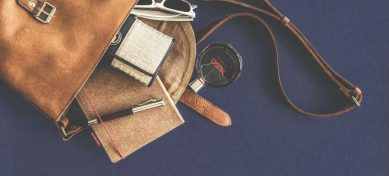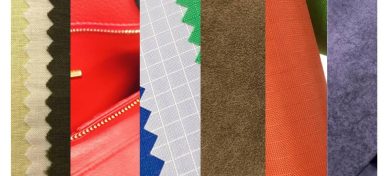You want a COACH bag that holds value. But fakes look better every year. I show you simple checks that work fast and protect your inventory.
**Check the [letter embossing](https://www.youtube.com/watch?v=P7cIWYSkX_k)[^1], [stitching finish](https://shopgildthelily.com/blogs/authenticity/coach?srsltid=AfmBOorr1U7s_6tihgU0PeMnNuC4guD0axQLMOtdEarTlMhGzB3pDy42)[^2], and the [story patch date code](https://essexfashionhouse.com/blogs/news/the-ultimate-guide-to-coach-serial-numbers?srsltid=AfmBOoqija1rEYIGZb4Ks2DftJOQBFAsNr9PrtCKasmm8az0dZ2zyIVW)[^3]. Real bags have crisp embossing, clean stitching with one double finish, and a month-letter plus two-digit year code. Fakes fail on these small, crucial details.**

I’ve spent over 18 years on factory floors, checking everything from leather hides to final stitches. My clients, global brands, trust me to protect their quality. The same checks I use for a production run of 5,000 bags are the ones you can use to spot a single fake. These details are hard to copy on a budget. Now I will walk you through my process, step-by-step.
## Are the letter embossing and logos crisp and even?
You see a bag and check the shape. Counterfeiters know this. I check the logo first because heat stamps and metal dies don’t lie.
**A real COACH logo has sharp, clean letter edges from even pressure. The depth is consistent. A fake logo often looks blurry or shallow, with a cheap, soft texture.**

The first thing I do is run my fingertip over the logo. Real embossing on genuine leather feels sharp and defined. Fake embossing often feels soft or shallow. I then use a small light and tilt the bag. On an authentic bag, the shadows inside the letters are even. This shows the stamping die applied uniform heat and pressure. Fakes often have inconsistent shadows, deeper in one spot and shallower in another. This happens when using cheap, poorly machined dies.
I also check the negative space.
* **Alignment:** Is the logo perfectly parallel to the seam below it? Real bags are made with jigs for precision.
* **Spacing:** Are the letters in “COACH” evenly spaced? Fakes often have letters that are too close or too far apart.
* **Foil:** If it’s a foil-stamped logo, the foil on a real bag sits perfectly inside the debossed letters. Fake foil often bleeds onto the leather or looks painted on.
These small things show the difference between a high-end production line and a workshop trying to cut corners.
## Do the stitches stay straight and finish cleanly?
Bad stitching sinks a brand’s reputation for quality. I can tell the skill of a factory just by looking at a single stitch line.
**Authentic COACH stitching is neat, straight, and has a consistent density. The line ends with a single, short double [backstitch](https://www.loveyourpurse.ca/loveyourpurse-blog/how-to-tell-if-a-coach-purse-is-real/)[^4]. Fake bags have crooked stitches and multiple double stitches.**

I always count the [stitches per inch (SPI)](https://www.amefird.com/wp-content/uploads/2010/01/Selecting-the-right-SPI-2-5-10.pdf)[^5]. On a real bag, the SPI is consistent across the entire product. For example, it might be 8 SPI on all main panels. Fakes often have varying SPI because of poor machine control or operator inexperience. Next, I look for the [backstitch](https://www.loveyourpurse.ca/loveyourpurse-blog/how-to-tell-if-a-coach-purse-is-real/)[^4]. A high-quality factory uses a programmed sewing machine to put a small, neat double stitch at the very end of a seam to lock it. This is a sign of strength. On fake bags, you often see messy double stitching in the middle of a seam. This is a sign of error, where the operator stopped and restarted, creating a weak point and a sloppy look.
| Feature | Authentic COACH Bag | Fake COACH Bag |
| :— | :— | :— |
| **Path** | Perfectly straight lines | Wavy or crooked lines |
| **Density (SPI)** | Consistent stitches per inch | Inconsistent, varies by panel |
| **Backstitch** | One clean, short double stitch at the end | Multiple messy double stitches |
| **Tension**| No loose threads, smooth surface | Visible knots or loose loops |
I once rejected a batch of 500 bags for a client because the [backstitch](https://www.loveyourpurse.ca/loveyourpurse-blog/how-to-tell-if-a-coach-purse-is-real/)[^4] was inconsistent. It’s that important for the bag’s longevity and the brand’s image.
## Does the story patch date code make sense?
The creed or story patch inside the bag holds a secret code. This is the fastest way to expose many fakes. It tells a story [counterfeiters](https://maisonrmi.com/step-on-how-to-detect-a-fake-coach-bag/)[^6] often get wrong.
**Find “NO.” on the last line of the story patch. The first letter is the [production month](https://essexfashionhouse.com/blogs/news/the-ultimate-guide-to-coach-serial-numbers?srsltid=AfmBOoqGItj6NlNzYsK2x_smRCZPBdXEc34DK_EtqinVBlUTChfs3orE)[^7], and the next two digits are the year. If this code doesn’t fit the bag’s style era, it’s a red flag.**

I teach sourcing managers to decode this simple system. The first letter corresponds to the [production month](https://essexfashionhouse.com/blogs/news/the-ultimate-guide-to-coach-serial-numbers?srsltid=AfmBOoqGItj6NlNzYsK2x_smRCZPBdXEc34DK_EtqinVBlUTChfs3orE)[^7], in alphabetical order. The factory skips the letter “I” to avoid confusion with the number “1”. The two digits after the letter represent the last two digits of the production year.
Here is the month-to-letter mapping:
* A: January
* B: February
* C: March
* D: April
* E: May
* F: June
* G: July
* H: August
* J: September
* K: October
* L: November
* M: December
So, a code like **NO. G23** means the bag was produced in **July 2023**. Note your provided example “E25 → June 2025” is a common point of confusion; E is the 5th letter and correctly maps to May. The key isn’t just decoding it; it’s about context. Does a July 2023 production date make sense for the style of the bag? If the bag style was discontinued in 2020, you have a fake. Counterfeiters often just stamp a random code, not realizing it has to match the product’s real history.
## Does the hardware feel heavy and operate smoothly?
Brands like COACH invest heavily in custom hardware. It’s a key part of the experience. Fakers use cheap, off-the-shelf parts that feel wrong.
**Real COACH hardware has a satisfying weight and a smooth finish. Zippers glide without catching, and clips move silently. Fakes often use lightweight, hollow hardware with sharp edges.**

When I receive a sample, I test the hardware with my eyes closed. Real brass or zinc alloy hardware feels solid and cool to the touch. Fake hardware often feels light, plasticky, and warm. I run my finger over the edges. High-quality hardware has polished, rounded edges. Fake hardware can have sharp burs left over from a cheap molding process. Then, I test the function. A real COACH zipper, often from a top supplier like YKK, has a smooth, quiet glide. A fake zipper will often grind, snag, or feel gritty. I test the spring on clasps and dog-leash clips. They should have a firm, snappy action. Weak or “mushy” springs are a clear sign of a low-quality part. Plating is another giveaway. Authentic plating is thick and even. On fakes, you might see tiny bubbles, an uneven shine, or areas where the thin plating has already started to flake off.
## Is the bag’s overall construction symmetrical and balanced?
A single detail can be faked, but it’s very hard to fake an entire well-made product. I look at the bag as a whole system.
**An authentic COACH bag stands straight, has perfectly symmetrical panels, and feels balanced in your hand. Fake bags often look lopsided, with mismatched panels and an uneven weight distribution.**

I recommend placing the bag on a flat surface. Does it stand up straight, or does it lean? A well-engineered pattern and proper internal structuring ensure a bag stands correctly. Fakes often slump or fall over. Next, look at it head-on. Are the left and right sides a mirror image? Check the placement of pockets, handles, and hardware. On a real bag, they will be perfectly aligned. I once saw a fake where one handle anchor was a quarter-inch higher than the other—it’s a small detail, but it’s everything. I also check the interior. The lining on a real COACH bag is taut and neatly fitted. In fakes, the lining is often loose, baggy, or bunchy in the corners. It’s a sign that the pattern was poorly copied and the bag was rushed during assembly. This final, holistic check catches the fakes that get some of the other details right.
## Conclusion
To spot a fake, check for sharp embossing, clean stitching, a logical date code, heavy hardware, and balanced construction. These manufacturing details don’t lie and protect your business’s reputation.
—
[^1]: Understanding the nuances of letter embossing can help you identify authentic COACH bags and avoid fakes.
[^2]: Learn how stitching finish affects the quality and authenticity of COACH bags, ensuring you make a wise purchase.
[^3]: Decoding the story patch date code is crucial for verifying the authenticity of COACH bags.
[^4]: Understanding backstitching can help you assess the durability and authenticity of COACH bags.
[^5]: Measuring SPI can reveal the craftsmanship quality of COACH bags, helping you spot fakes.
[^6]: Understanding counterfeiters’ methods can help you better identify fake COACH bags.
[^7]: Identifying the production month is key to verifying the authenticity of COACH bags.











